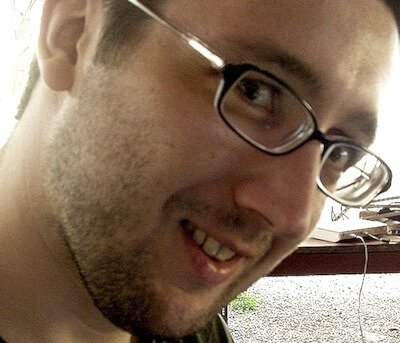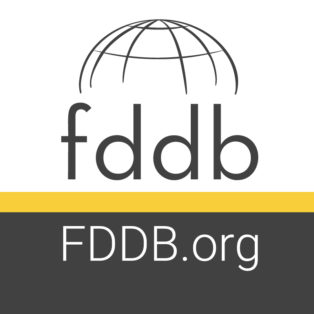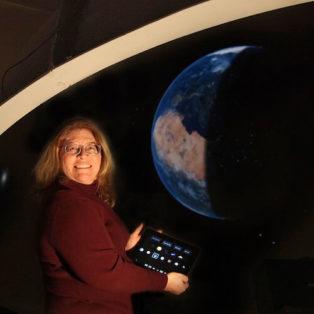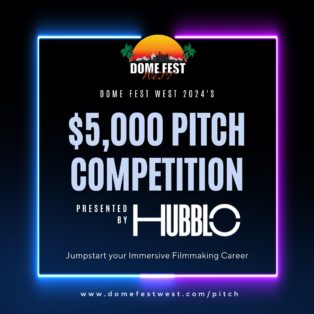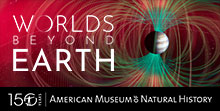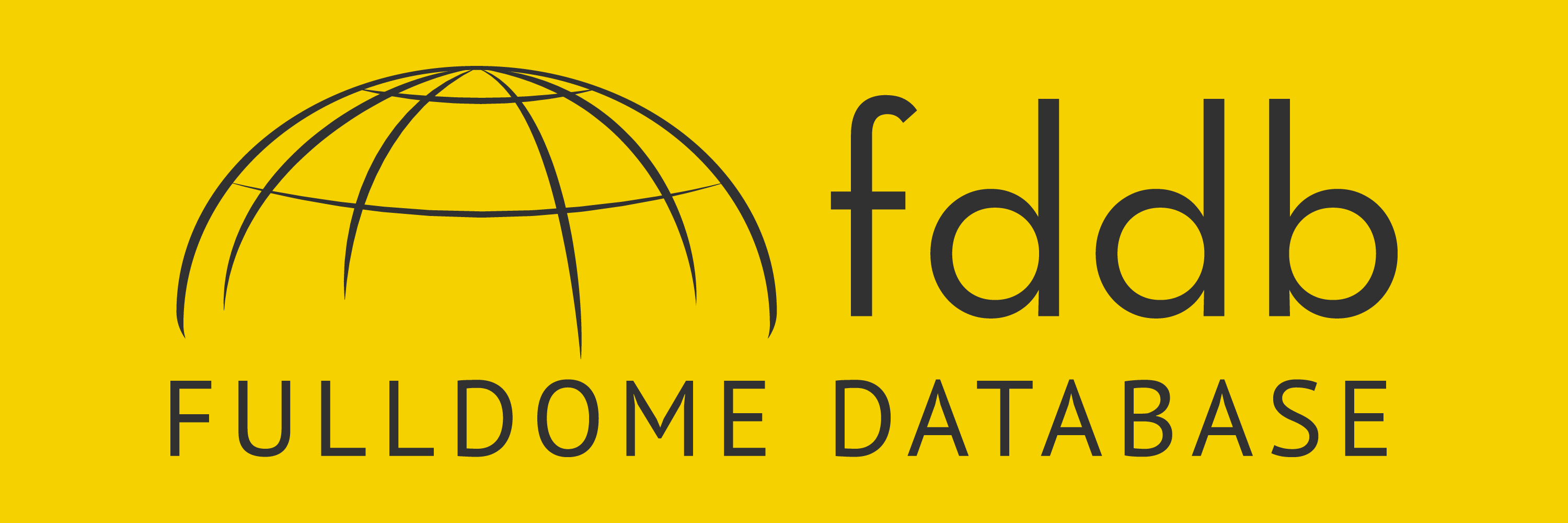2012 FullDome Festival Diary - Day 3
Back we are with our diaries from the Festival. The last three days were so dense and rich that we actually preferred to postpone our posts and keep track of what's happening in Jena.
The first workshop of the day was "New Stories for a New Medium", by Hannes Wagner, who studied Media Production at Bauhaus University, Weimar.
Hannes - who was both involved with the making of the festival's fulldome trailer and greatly helped during the festival - shared his thoughts on storytelling in domes. One of his first points was noting that every medium has special ways of telling stories. Since the first theaters, acting took place in front of the public, something that still happens in theaters and cinemas today. But there are other immersive media: most people would agree that you can immerse yourself while reading a book; others would say the same happens looking at paintings and photos, and video games also take us a step further into the fiction, allowing us to interact with its characters.

The bottom line is every medium has a different stage where the action takes place. So now comes the question: what's the stage for the fulldome?
Of course there is no unique answer to that, but Hannes introduced the audience to further discussions by making them watch one of his projects. In watching, he proposed that, basically, there are two kinds of storytelling, "body-less storytelling", which develops from an external style of narration, to a more personal and emotional one, and dialogs that roll out between characters.
Even though the fulldome medium can turn out to be a very immersive one, it can sometimes distort reality. While Hannes was questioning the audience on how the future of fulldome will come by and how it will look like, creating a new language (not rules) for the fulldome emerged as a need for the whole community. Micky Remann noted, "the human being is just not equipped to enjoy a fulldome stimulus", which of course gives challenges to producers. We'll then need a new "dictionary" from which we could first "learn the rules, for then starting breaking them".
Hannes' talk started a discussion which will surely continue and evolve over the next few years: it will be interesting to see what students, producers and the market itself will come out with as a contribute to it!

Photo credit: Michaela Honauer, FullDome Festival 2011, Jena
From storytelling the discussion moved to a topic that was between software, hardware and arts, spearheaded by Jan Zehn and Stefan Berke. Both guys fell in love with the 3D Spatial Sound System which the Jena's planetarium is equipped: a huge array of speakers all around the dome that can recreate sounds not only around you, but also above you, in a three dimensional space.
Their first production was CymaSonics - Matrix Optimizer 101, which developed and premiered as "2.0" at this year's festival. Jan is more the art mind behind both productions, whereas Stefan is more the software guru behind them. As the latter didn't like any of the software available in the market, he decided to create his own, CymaSonics.
After a short introduction on the main ideas behind the project, these folks introduced us to a live-demo of their technology. The software is pretty neat, and the algorithm is impressive. It looks like a normal multitrack sequencer which supports a virtually infinite number of tracks that can be placed --as virtual objects - wherever in the 3D virtual space environment. Such objects and events can be animated through a timeline, and virtual microphones record how each sound would be heard from each point in space. The software also supports some sort of "audio ray tracing" as well as sound reflection… impressive!
What makes Jan and Stefan's project original is how they generate sounds for the audio system. In fact both their shows display high resolution animations that come out of analytical expression for waves: you play around with frequency, length wave and so on, and you get a geeky and peculiar fulldome movie with 3D spatial sound to enjoy. Apply some math, get the budget for a 3D audio system, and you'll enjoy being immersed in a 3D "soundscape"!
Show Reviews
The first to be screened was Lars - The Little Polar Bear, which was originally produced by the Mediendom in Kiel and then adapted and translated into English, with some new scenes too, by Loch Ness Productions.
The first part of the show turns to be very enjoyable for children, with a very nice and expressive narration and a great symphonic soundtrack. Animations are simple, mostly made of 2D images, but perfect to get children's attention and participation. The second part features high resolution images of Arctic's landscapes and numerous polar bears, which look nice on the dome but won't make you feel comfortable in real life. The final message/moral is worth underling: "You can only protect what you know" (referring to the Arctic), a phrase we couldn't agree with more.
From the freezing Arctic we move to the depths of the ocean with Into the Deep, an Ogrefish production. Straight from the beginning you get the impression you are surrounded by stars, but then you get eaten by a fish and realize you are actually underwater.
The film tells us the story of how the humans first tried and then succeeded in conquering the depths of the oceans; they found out about forms of life that were not yet known and indeed capable of living there. We get to see a variety of species: the vampire squid, the frog fish, the jellyfish, etc. Worth mentioning is also a nice reconstruction of the black smokers, chimney-like structures made up of minerals that come from beneath Earth's crust.
The next movie comes from the USA, Solar System Odyssey, by the Morehead Planetarium. The show takes place in the future and starts with a very immersive scene where you get to fly through a futuristic city, with high-tech skyscrapers as well as flying cars.
From the storytelling style you can recognize the same footprint of "Earth, Moon & Sun", you can easily spot the same nice sense of humor. This time there are two main characters: an almost-retired space pilot and his boss' daughter who sneaks into the space ship. They start looking for a new place where a human colony could establish itself and learn many details about Jupiter, its moons and space junk throughout their journey.
The show delivers also some action scenes, which make it great for kids! Again, a great moral at the end: don't leave our Earth behind to look for new ones, but commit yourself to respect our planet and take care of it.
Nanocam, by E.L. Exilio, is something different from the usual: a very original trip into the five kingdoms of life, which will be experienced via a microscope simulator that will take you to the tiniest scales of nature.
The storytelling is achieved through nice dialogs between two kids in front of their PC. All images come from accurate models, which are very impressive thanks to the use of the black-and-white technique. The film overall makes a great use of the whole dome space. The soundtrack is also very suggestive, with low frequency sounds which you'll feel down in your belly!
Astronaut 2012 is the remake of the very well known, as well as popular, fulldome production by NSC Creative, UK. The show is now available in stereoscopic 3D dome format but, unfortunately, Jena's planetarium does not provide 3D experiences just yet, even though it delivered a great high resolution fulldome experience anyway!
If you haven't see the movie yet, you'll be amazed by the starting scene: while you hear a countdown, you realize you are inside an astronaut's brain, then into his heart, then into his arteries, then down to his lungs and then you find yourself in orbit around the Earth. You will definitely learn and experience what it takes to become an astronaut!
There are many remarkable scenes, like one in a swimming pool where the astronauts train, the very popular scene with a centrifuge, and one explaining how the human body reacts to microgravity.
Back to our planet with Planet Earth by the Hamburg Planetarium. Unfortunately the show was only in German, but both the visuals and the soundtrack got most people excited anyway. The sequence within the leaf was great; the dance of the sunflowers was magical and both the visuals and the music from the four-seasons-scene were just outstanding!
The show also reconstructs how the Ice Ages happened, how the North Pole looked then and looks like now, and how the greenhouse effect works. We didn't get the chance to fully understand the narration and the overall explanations, but we definitely got the impression that the show would be worth translated into English.
It seems that our planet got popular in the fulldome scenario, in fact the next show is a Greek production titled The Earth and Me, by the Eugenides Foundation and Animonautes.
The film is all about the Earth's delicate ecosystem and how we, as humans, are affecting it. Human evolution is cleverly shown by a rolling wheel, first made out of stone and then developing until it is the one we see attached to our cars.
Many sequences were smartly designed: one about CO2 emissions where we move from cars to airplanes, and one where many names come together to form our Earth. The moral -- each of us can do something to lower human beings' impact on the planet and reduce all sorts of pollutions that are affecting it.
Also speaking to Earth's climate is Dynamic Earth, a production by Spitz et al. The show delivers striking visualizations of our planet as seen from space, with incredibly high resolution images of the Earth. We actually get to see something from deep space too: a very nicely reconstructed supernova remnant, a coronal mass ejection from the Sun as well as a Venus landscape. There are also many great underwater scenes with a lot of fish moving around… and many sharks too! You get to learn also about the carbon cycle as well as how the global biosphere works.
You should note that most of the scenes are not animations, but rather simulations of what happens both in the atmosphere and in the oceans. This was made possible by many scientific institutes being involved in the documentary's production, which helped to produce awesome and accurate visualizations, such a massive simulation of Hurricane Katrina.
Less animation and more photography comes from Experience the Aurora by Evans & Sutherland, which shot time-lapse sequences during a 7-month campaign to freezing places to capture auroras. It's not only about nice photos, but also about the adventure of such a mission, which is sometimes told by the photographer himself.
Galaxy Time is a production by Planetarium Galilee, in Montpellier, France. After a quick trip among the planets of our solar system, the show gets you just what it promised: galaxies!
The camera movement that exits from the Milky Way's galactic plane is particularly well designed and you can actually spot our two satellite galaxies as well as others from our local group. Don't worry, clusters and superclusters are there too!
Music is also nice, and the overall scene gives you the time to look and enjoy what is around you.
SpacePark 360 brings us from science to entertainment, with a 38-minute ride through roller coasters spread all around our solar system… a new way to introduce space sickness!!
Well, it's gotten late, but the excitement is not over yet: it's now time for a few demos taking advantage of the 3D Audio System just recently installed. While you'll be learning more about it in our next posts, tonight we get the chance to experience something more than just the FullDome Festival's trailer.
The first performance is by Ralph Heinsohn with his tribute to a novel, where words are just everywhere and start to make sense after a few minutes. Ralph definitely has a unique taste of beauty, which he delivers on each of his production. Sounds fill the dome, it's just breathtaking!
It's then time for Jan and Stephan's demo (see above), which, just like with Heinsohn’s, makes the public go crazy! You really can't imagine how well the 3D sound system works, it's definitely worth a trip to Jena!
The new Planetarium was the last piece for the day, by Rocco Helmchen, which filmed both the city of Jena and its planetarium in an astonishing way. During the festival the teaser of Rocco's upcoming show Chaos & Order also screened: man, what a performance! You actually can't find a climax as the whole thing is a climax! There is art, poetry, math, magic, passion, power and talent.
And with such beautiful pieces the third day in Jena is over, with so much to think about and bring back home for all of us to remember.
Still 2 days to go, stay tuned!
Have you liked this post? Subscribe to FDDB Newsletter
Sign up now, it's free!










